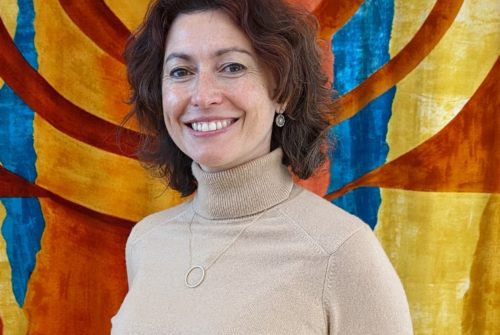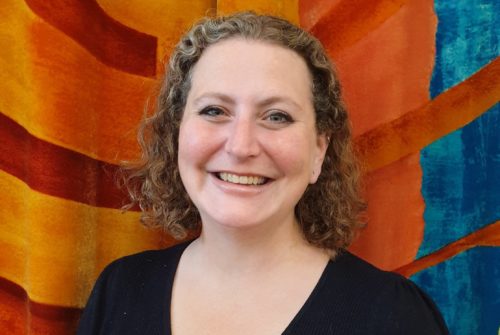Parashat Shemini – Kosher Scrolls and Kashrut for the Modern World
About 15 years ago I was officiating at a Bar Mitzvah in Bet Warsawa – the Progressive community of Warsaw. After landing in Warsaw I arrived at the shul on Friday afternoon and needed to set the scroll and rehearse with the Bar Mitzvah. It seemed that one of their two sifrei torah had been rolled very badly and one side was incredibly thick and warped. The other scroll, when I turned to it, had a section that had been tipexed out and written upon in biro. I was momentarily concerned that the scrolls were pasul (that is made unkosher by mistakes or damage), but with few other options I pragmatically set the second scroll to that weeks Parashah and put them both away. A congregant later that evening informed me that the first, apparently badly rolled scroll was in fact so thick because the parchment had become water damaged during a 50 year stay hidden in the wall of a house by its Jewish owners. They had bricked it into the walls of their home shortly before they were deported, and then murdered, in 1940. The scroll was discovered when the house was being demolished half a century later, and had found its way into the Warsaw Progressive community. The second one, which we used, had been smuggled out of a small Polish village before the war, and returned to Poland only 3 or 4 years earlier. I suddenly felt honoured and humbled to be using the scrolls, and to be making these damaged items part of something holy and alive today. Jewish ritual objects are designed to be used, and making that which was damaged by such horrors holy again through use was just a huge privilege.
Our concepts of what is ‘kosher’, or fitting, whether a scroll we read from, or the food we eat, may shift during our own lifetimes, or even during an evening, and there have certainly been different reasons offered for the arguably arbitrary kashrut rules we read about today from the scroll here. Maimonides argued in the 12th century that food forbidden in Torah was unfit for human consumption because it was not healthy, so for example, when discussing the forbidden fat of the intestines, he writes “it makes us full, interrupts the digestion, and produces cold and thick blood.”[1] . I have also been told (purely anecdotally) by a friend who works in alternative therapies, that pork is the hardest meat for the body to digest, and that our systems can struggle with meat and dairy products, so to put both in at once can overload our digestion. A relative once informed me that kosher meat was healthier because the blood had been drained out, and with it many of the impurities that might be in the animals system.
On the other hand, as my Great Uncle Monty would always say, ‘We do it because the Torah tells us to!’ Indeed, it seems Rabbis such as Abravanel, a Torah scholar and statesman in Spain and Portugal in the fifteenth century, agreed with Uncle Monty, arguing against the rationalist physician Maimonides that “the Torah did not come to take the place of a medical handbook but to protect our spiritual health”[2]. How we keep kosher and why we keep kosher will no doubt be different for everyone here (whether in person or joining us virtually). Perhaps it is in order to enhance a sense of ‘holiness’. Maybe you want to identify with the Jewish past and peoplehood, or with contemporary Jews who observe kashrut and whom you want to be able to eat in your home. Some see kashrut as an expression of ethics, of caring for an animals life as well as its death, and to be mindful of what we consume in the world today. Growing up I was often told these were laws designed to keep a desert dwelling community safe and healthy, and we didn’t need them in the days of 21st Century refrigeration.
The reasons we all choose to keep or not keep kosher will be wide and varied, and will probably have changed during our Jewish Journeys so far. Mine certainly have. It wasn’t until I was at University 100 miles from the nearest kosher deli that it suddenly seemed important for me to more fully reclaim this part of my identity and sense of peoplehood. My mum consequently tried to help by sending packages of vorscht[3] in the post, which my college porter always seemed to think was black pudding!
As someone who has, through her own journeying, arrived at a position which many consider to be a practice that is relatively observant, I find it is important to remember not to become caught up purely in the ritualistic and legalistic side of kashrut, which many fling themselves into at Pesach more than at any other time! As Reform Jews it is important that we find an expression of kashrut that fits with our world-view, as individuals and as a community. There are ethics and values embedded in kashrut that I think speak to where we are in the modern world, for example the cost of kosher meat certainly helps me to appreciate in some small way the animal life that has been taken, and encourages me to eat less of it, reducing my carbon footprint. Similarly the emphasis in Judaism on animals living a good life is an important ethic, and one our meat producers have in many ways lost sight of. In many contexts, we also need to begin to broaden our definition of what keeping kosher means beyond the kosher animals listed in this week’s portion.
In 2004, Yechiel Tropper, wrote in the Israeli newspaper Ha’aretz,
“It seems that what is needed now is an expansion of the terminology of Judaism and the areas with which it deals. The battle over the state’s Jewish identity must be extended beyond pork laws and the ban on selling hametz on Pesach to include key social issues as well. On all of these issues, the religion of Israel has positions that ought to be heard in the country’s social discourse. […] the concept of kashrut is far broader: If you eat a force-fed goose or dine in a place that does not honor its workers’ basic rights, you are violating the laws of kashrut.”
In the same year there was, in Israel, the establishment of something called the ‘Tav Chevrati’ (the Social Seal). This is a kind of kosher certificate to ensure that workers in restaurants are treated according to the minimum standard required by Israeli law, and that there is disabled access. They have certified more than 350 restaurants in Israel with their seal. About 250 of those restaurants are also certified as strictly kosher.
In the United States, a similar project was spearheaded by Uri L’Tzedek, an Orthodox Jewish social justice organization, which launched the Tav HaYosher (the Ethical Seal) in the spring of 2009. The seal aims to secure workers’ rights to fair pay, time, and safe working conditions in kosher restaurants. A Conservative Movement initiative, Magen Tzedek certifies kosher factories which have good labour practices. We see here an important expansion of what it means to call something kosher. Just as the Polish Torah scrolls might be considered unkosher, but were in other ways totally sacred, meat might be kosher by one definition, but unkosher because of how it was produced or how the animal lived. Jews have always expanded, contracted, and changed the definition of Jewish laws, and found multiple ways of disagreeing. In Hungary, for example, an entire movement was started based on a disagreement over whether sturgeon, which has scales in the water, but which fall off out of the water, was kosher.
If we are what we eat, it really is time for us to ask what is ‘suitable’ or ‘proper’ for us to be eating. On the one hand we must consider what we do to our bodies, as Rambam did, and on the other hand, we must consider what we do to others. Strong Biblical and Rabbinic injunctions against cruelty to animals, and how we treat those who work for us are something we should be proud of as Jews. But we must also take responsibility for the global impact our farming methods have in part on our food, but also on the environment and those who do the farming, preparing, and serving of food. Ancient Jewish ideas feed into modern ones, sometimes as a radical answer to challenges we face, often showing that Judaism has something to say about how we live today.
Some see traditional Kashrut as a negative for separating us from those around us. For others the same idea makes it a positive, creating a distinctive, cohesive identity. Many communities, sociologically, have done the same. Just as we can decide to reclaim the holiness of a pasul scroll, damaged by the horrors of the Shoah which we remembered this week, we can decide what our kashrut will look like, what makes food fitting for us, and what that means for the world around us. And it doesn’t have to look like the kashrut of the person sitting next to us, or at a safe social distance.
The beauty of Reform Judaism for me lies in its openness and opportunity for personal, informed, choice. We can all claim kashrut, in some form, for ourselves, whether it expresses itself through buying only kosher meat, or through buying organic lettuce, free-range eggs and fair trade tea. Thousands of years of Jewish tradition, law and ethics continue to evolve as they always have done with each choice we make. How we interpret kashrut and make it meaningful, as with the Polish scrolls, may not always follow along traditional lines of Jewish thought as we seek to reclaim it for ourselves. In the case of food, however, we have the opportunity for real, and daily, informed decision making, bringing our Judaism into our day to day lives using it to make a difference to the world around us, and continuing to keep our Judaism speaking to the values we choose to live by.
May all our choices be made for the wider good! And let us say, Amen.
[1] Guide for the Perplexed 3:48
[2] Abravanel Torah Commentary
[3] Kosher rolls of salami



